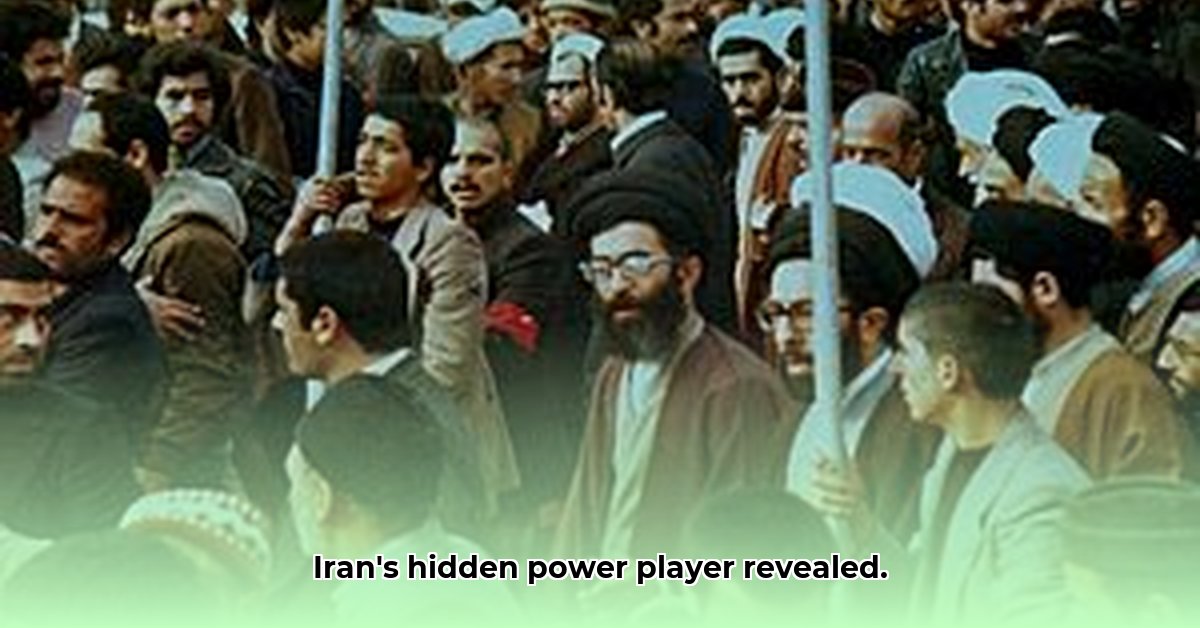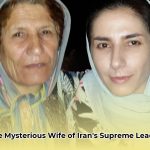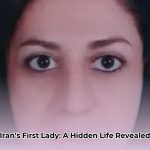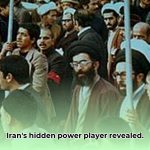Who is Mansoureh Khojasteh Bagherzadeh? While she is the wife of Iran’s Supreme Leader, Ali Khamenei, surprisingly little public information exists about her. This article explores her life, influence, and the challenges of researching powerful figures in secretive systems. We aim to uncover what is known, identify the gaps, and explore avenues for future investigation, analyzing her impact and family connections. It’s a look into understanding her role rather than a biography. For a more in-depth biography, see this resource.
Mansoureh Khojasteh Bagherzadeh Official Activities: Exploring Her Public Role
The Enigma Surrounding Iran’s First Lady and Her Limited Public Profile
Mansoureh Khojasteh Bagherzadeh, the wife of Iran’s Supreme Leader Ayatollah Ali Khamenei, is an enigmatic figure. Her position suggests influence, but concrete details about her activities are scarce. This lack of public visibility points to a deliberate strategy, fueling speculation about her true power and connections in Iran’s system. Let’s examine what we know and the challenges of uncovering more information.
A Life Mostly Behind Closed Doors: Details and Challenges
Mansoureh Khojasteh Bagherzadeh was born in 1947 in Mashhad, Iran. She married Ayatollah Khamenei in 1964, their wedding officiated by Ayatollah Mohammad Hadi Milani, and they have six children: Mostafa, Mojtaba, Masoud, Meysam, Boshra, and Hoda. She comes from a religious Persian family. Her father, Mohammad Esmaeil Khojasteh Bagherzadeh, was a businessman. Her brother, Hassan Khojasteh Bagherzadeh, held a position as the deputy director of IRIB. While some details are available, such as her family’s religious background and ties to Mashhad, details like her exact birthdate, educational background, and specific instances of professional life remain largely unreported, making official verification difficult.
Indirect Influence: A Network of Family Ties and Potential Political Shaping
While direct evidence of Mansoureh Khojasteh Bagherzadeh’s official roles is elusive, her family’s influence within Iran’s political and religious establishment is notable. Her sons, in particular, hold significant positions. Mostafa is engaged in religious studies, married to the daughter of scholar Azizollah Khoshvaght. Mojtaba, considered a political strategist, is married to the daughter of Gholam Ali Haddad Adel. Masoud is married to the daughter of Seyyed Mohsen Kharazi. Meysam is married to the daughter of Mahmoud Lolachian and is involved in publishing Khamenei’s works. Her daughters, Boshra and Hoda, are married to the son of Mohammad Mohammadi Golpayegani and the son of Mohammad-Bagher Bagheri, respectively. This interconnectedness suggests considerable, indirect power. Her influence during their formative years is significant.
Investigating Powerful Figures in Secretive Systems (Opaque Regimes)
Investigating powerful individuals within opaque political systems like Iran’s presents unique challenges. Access to official documents or interviews is often restricted. While many nations have secrecy surrounding leaders’ families, the level surrounding the Khamenei family elevates the difficulty in determining fact from speculation. Mansoureh herself maintains a discreet public presence, with few publicly available photographs or direct quotes, making it harder to assess her direct involvement. This lack of transparency makes separating verifiable facts from conjecture difficult when researching potential power dynamics.
Future Research: Uncovering Hidden Currents and Potential Insights
Many critical questions remain unanswered. Future research must focus on verifying biographical information, exploring potential archived materials, and investigating family relationships. Employing qualitative research methods and analyzing family connections within the power structure could reveal significant insights. The goal is to uncover the hidden streams of influence that may exist, contributing to a broader understanding.
Navigating the Information Void: A Complex Puzzle and Analytical Approach
The scarcity of public information doesn’t negate Mansoureh Khojasteh Bagherzadeh’s potential influence; it underscores the challenges in researching figures who maintain a private profile. We must accept limitations while acknowledging the possibility of unseen power dynamics.
Understanding the Broader Context: A Necessary Step and Critical Aspect
Understanding Mansoureh Khojasteh Bagherzadeh’s influence, or lack thereof, requires a thorough understanding of Iranian politics. The culture of secrecy, the hierarchical nature of the political system, and the role of religious authority shape information sharing. This context is crucial for interpreting available data and drawing informed conclusions about potential impacts from key figures.
The Ongoing Investigation and Future Transparency
The picture remains incomplete, and many questions remain. Understanding the roles of influential figures like Mansoureh Khojasteh Bagherzadeh is critical to understanding Iran’s political machinery. We need increased research efforts, more transparency, and a nuanced approach to understanding how power and influence operate in a country like Iran. The journey to a complete understanding is ongoing. According to academic works, this type of research is challenging due to limited access.
How Did Mansoureh Khojasteh Bagherzadeh Influence Iranian Politics Indirectly? Exploring Political Connections
Key Takeaways:
- Mansoureh Khojasteh Bagherzadeh’s life remains largely private, making it difficult to analyze her activities directly.
- Her influence, if any, is indirect and difficult to quantify due to the system in which she operates.
- Analysis is hampered by conflicting reports and a lack of verifiable data, requiring a skeptical approach.
- Speculation regarding her role mostly centers around her support for her husband’s political career.
- Further research, including archival work and historical analysis, is crucial to better understand her impact.
The Elusive First Lady: Understanding Her Limited Public Profile
Uncovering the life and influence of Mansoureh Khojasteh Bagherzadeh presents a formidable challenge. She embodies the power behind the scenes in Iranian politics. While the wife of Supreme Leader Ali Khamenei, her public profile is minimal. But how did Mansoureh Khojasteh Bagherzadeh influence Iranian politics indirectly? That’s the central question that requires careful consideration.
A Patchwork of Information: Challenges in Verifying Details
Even basic biographical details are inconsistent across sources. Her birthdate, birthplace, education, and even the number of children she has, vary. The scarcity of reliable data underscores the challenges in assessing her true impact and analyzing her role within the Iranian political system, which is known for its secretive nature.
Indirect Influence: A Matter of Speculation and Informed Guesswork
It’s within this context of limited information that we must explore the potential, albeit indirect, political influence of Ms. Bagherzadeh. Some sources suggest involvement in charitable works, mainly focusing on war veterans and victims; however, the specifics of these activities remain unverified. In opaque political systems, the wife often provides a quiet, supportive role, shaping perceptions and influencing her husband’s decisions behind closed doors.
Dissecting the Narrative: Possibilities and Limited Direct Evidence
A well-connected spouse can undeniably impact policy indirectly. Subtle suggestions, personal connections, and access to information can all create effects within a government structure. However, verifiable evidence is lacking.
The Path Forward: Research & Verification and the Need for Transparency
Ultimately, understanding Ms. Bagherzadeh’s influence requires a deeper dive. This necessitates meticulous archival research, cross-referencing multiple sources, and employing fact-checking methods. We need to consider the limitations of available information and acknowledge the challenges. Accessing Iranian state archives is a difficult task.
Mansoureh Khojasteh Bagherzadeh: Family Influence on Iranian Politics and Dynastic Succession
Key Takeaways:
- Limited public information surrounds Mansoureh Khojasteh Bagherzadeh’s life and activities.
- Her influence stems primarily from her marriage to Supreme Leader Ali Khamenei.
- Analyzing her impact requires examining indirect influence and navigating information scarcity.
- Inconsistencies in biographical details highlight the challenges of researching powerful figures.
- Future research requires accessing primary sources and engaging with Iranian authorities (ethically) to bring more details.
The Elusive Figure: Mansoureh Khojasteh Bagherzadeh and the Power of Discretion
Who is Mansoureh Khojasteh Bagherzadeh? The wife of Iran’s Supreme Leader, Ali Khamenei, remains a figure. While her role as a spouse is undeniable, the extent of her political influence is a subject of intense speculation, complicated by a lack of publicly accessible information. This makes understanding Mansoureh Khojasteh Bagherzadeh: Family Influence on Iranian Politics particularly challenging and the need to find historical context.
The Challenges of Investigation: Transparency and Access Hurdles
Unraveling the details of her life is like piecing together a puzzle with missing pieces. Basic biographical information, such as her exact birthdate and birthplace, varies across sources. This inconsistency reflects the opacity surrounding those closely linked to the Iranian power structure. The lack of transparency itself is arguably a form of influence—a cultivated image of discretion.
Indirect Influence: A Powerful Legacy and the Unseen Connections
While we lack concrete evidence of direct political maneuvers by Mansoureh Khojasteh Bagherzadeh, her proximity to power is undeniable. Her husband’s position suggests a level of indirect influence, however subtle. These are questions impossible to definitively answer with the currently available information.
The Path Forward: Research and Transparency for Reliable Insights
The nature of this investigation underscores a critical need for improved research methodologies. Accessing primary sources, including Iranian archives, and conducting interviews (ethically













